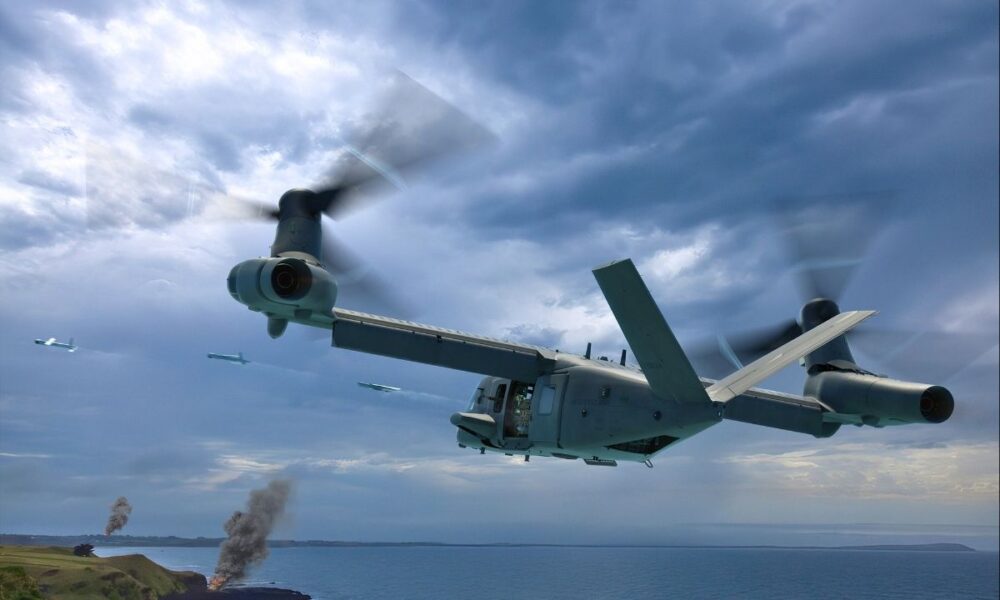Fort Worth-based Bell Textron Inc. is speeding up its work on the Army’s next-generation attack aircraft, the MV-75, while pouring huge investments into facilities across Dallas-Fort Worth.
Selected by the Army in 2022 under the Future Long Range Assault Aircraft program, Bell’s MV-75 “helicopter” is set to eventually replace the iconic UH-60 Black Hawk. The overall contract to build the aircraft could be worth up to $1.3 billion, with potential long-term value soaring to $70 billion over the next few decades, according to the company.
To boost the production process, Bell has been building and expanding several facilities in the DFW area.
A $20 million “Drive Systems Test Lab” in Grand Prairie will focus on overseeing the development of some of the chopper’s technology, like gearboxes, while a “Weapons Systems Integration Lab” in Arlington will help support Bell’s existing flight research center.
In December, the company also unveiled a $632 million plant at AllianceTexas, dedicated to manufacturing rotor blades and transmissions for the new aircraft.
Currently, Bell employs more than 8,000 workers, with roughly 4,000 based in Fort Worth. That workforce is expected to grow as the MV-75 program ramps up. More than 1,000 employees are already focused specifically on engineering and manufacturing development, Bell reported.
The Army has hinted that it wants the MV-75 “helicopter” delivered by 2028, two years ahead of the original 2030 target.
In response, Bell is now using a “soldiers on the factory floor approach” to speed up production, while also giving Army pilots early exposure to the modern “tiltrotor technology” the aircraft will use.
Two virtual prototypes of digital flight simulators mimicking the aircraft’s cockpit were delivered in June to help pilots train in advance.
While the MV-75 will be assembled at Bell’s Amarillo facility, many components will be manufactured and tested in DFW. The north Fort Worth plant, still in the early permitting and design phase, may see some early production moved to existing sites to meet the Army’s accelerated timeline demands.
Bell is also reportedly pursuing more Army contracts, including a program to train pilots with its 505 helicopters, potentially replacing the “UH-72 Lakota” the military currently uses. If awarded, Bell says they could supply roughly 190 aircraft for that training program.
The company’s growth is already blatantly visible in its recently reported earnings.
Textron Inc., Bell’s parent company, reported $1 billion in revenue for the second quarter of 2025, up 28% from last year, obviously fueled by the MV-75 program, as well as their commercial helicopter sales.


